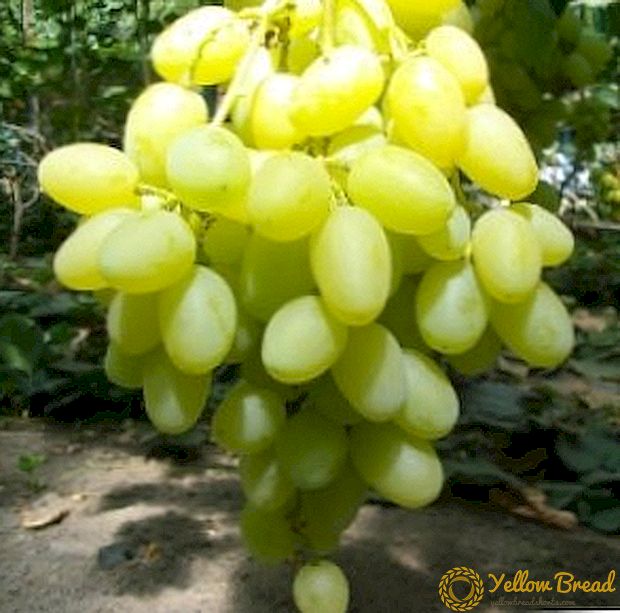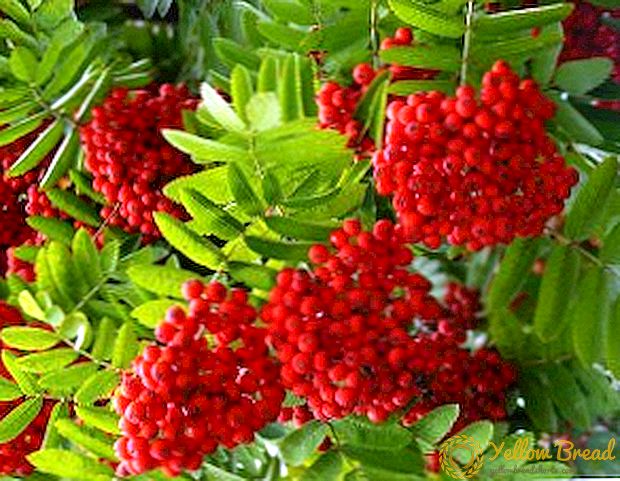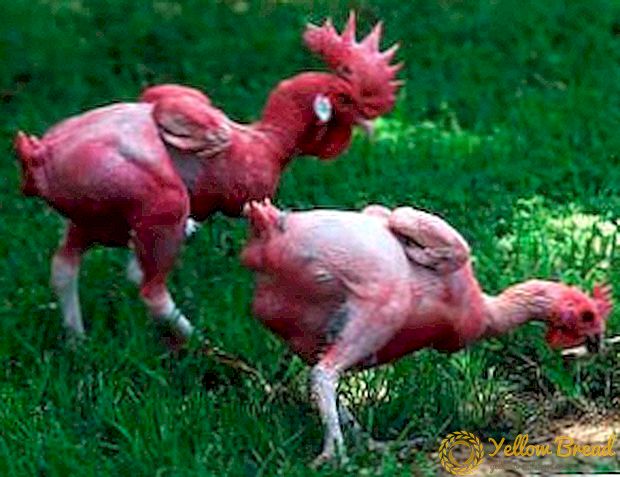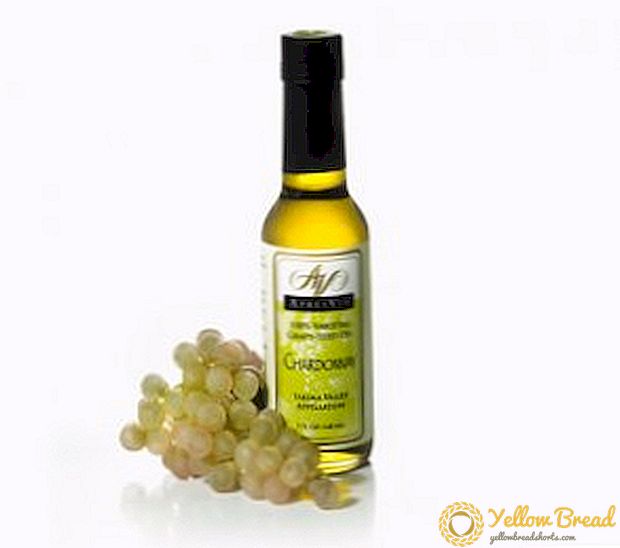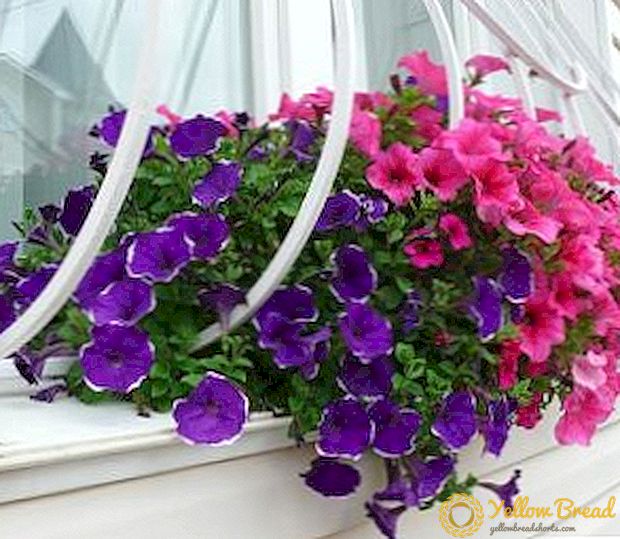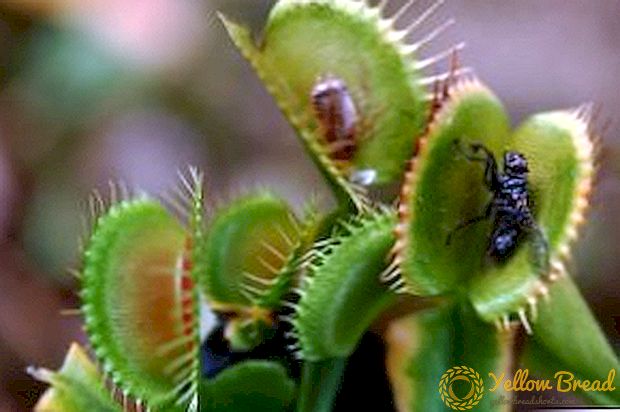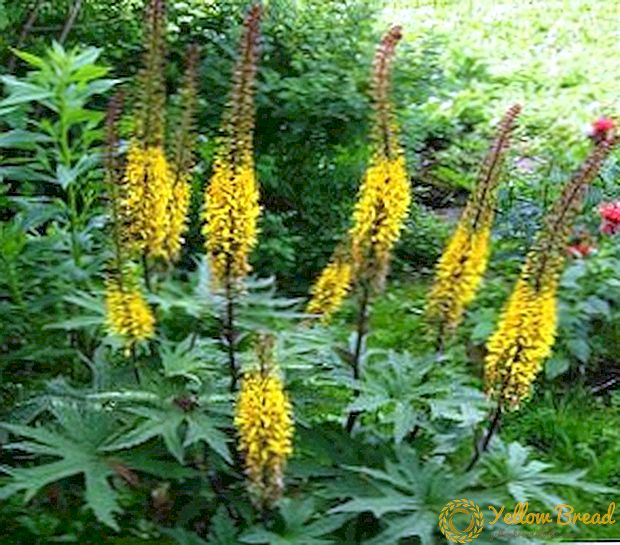 Many gardeners try to find non-trivial and at the same time simple solutions that will help them improve their land plots. To resolve this issue will help landing such a representative of the Astrovie family, as Bzulnik Przhevalsky (lat. Ligularia Przewalskii), which will be discussed in this article.
Many gardeners try to find non-trivial and at the same time simple solutions that will help them improve their land plots. To resolve this issue will help landing such a representative of the Astrovie family, as Bzulnik Przhevalsky (lat. Ligularia Przewalskii), which will be discussed in this article.
- Description
- Species for breeding in the garden
- Landing features
- Location selection
- Growing soil
- Landing rules Przewalski ligulyaria
- Vegetative method
- Growing from seed
- Plant care
- Watering
- Pruning
- Top dressing
- Diseases and pests
Description
The general view of a flowering adult plant can remind many a kind of candle. The stem reaches a length of 150-200 cm, while the flowering part is about 1/3 of its entire height. Buzulnik Przewalski both in our country and in Europe, blooms from mid-June until the end of August. This species is notable for the fact that small, yellow flowers of each plant are collected in long narrow inflorescences, while the upper parts may tilt slightly.

Species for breeding in the garden
For cultivation in our latitudes, three varieties of the Przewalski buzulnik are best suited:
- "Rocket" - it is characterized by stems of a red-brown shade, reaches up to 2 meters in height, has a rather solid structure that does not need additional support, and has heart-shaped leaves.
- "Maple Leaf" - more stunted than the previous one, up to 170 cm in length, the leaves, as the name implies, are maple-shaped, larger than the variety “Rocket”.
- Light fingered - has foliage of irregular shape and inflorescences of rich yellow color.

Landing features
Evolutionarily it turned out that the Przewalski's buzulnik is a rather unpretentious plant, and therefore there will be no particular difficulties with its planting and care by experienced gardeners.
Location selection
The best place to grow perennials will be a wet, preferably near the pond, shaded area.
Growing soil
Although the buzulnik is undemanding to the ground, however, for the best result, it is necessary to plant in moist and non-depleted soil. In the event that the area where the bush will be planted has a clay structure, it is necessary to pre-fertilize the soil with humus.

Landing rules Przewalski ligulyaria
There are two fundamentally different ways of planting a buzulnik - dividing an adult bush or breeding by seed. This bush can grow in one place for up to two decades, and if it suits you, then once every five to six years it is recommended to rejuvenate it by dividing the parent bush.
Vegetative method
This method involves the separation of the parent plant into several parts, followed by the landing of each of them in separate wells.To do this, the dug out rhizome should be thoroughly rinsed and divided into individual shoots with a knife, and at least one fertile bud must be present on each division. Next, the daughter plants are seated in separate wells with dimensions of 0.4x0.4x0.4 m, which must be filled with a mixture of humus and fertile land in advance. For best results, it is recommended to immediately add a small amount of mineral fertilizer to the wells after the seeding.

Growing from seed
Bushes Przewalski buzulnika can also be obtained by growing from seed. This method is less fast than the previous one. The visible result is likely to be obtained only in 3-4 years.

Plant care
Shrub care is pretty simple. Practically the only and main rule is a sufficient amount of moisture. Therefore, it is important to choose a wet and shaded area for planting this plant, which will greatly facilitate the care of him.
Watering
If the buzulnik grows near the reservoir, additional watering is hardly required, however, in particularly dry summer periods, it is recommended to wipe the petals with a rag moistened with water in order to imitate the wet microclimate that is so necessary for it. If the plant grows on a site remote from water, then it will need a constant abundant watering. 
Pruning
This bush does not require constant pruning, but if you do not need seeds, then after the inflorescences lose their colors, you can safely cut them.This will help the bush to acquire additional visual pomp and create a fundamentally new aesthetic effect.
Top dressing
Top dressing, as mentioned earlier, is necessary during the repotting period. In other periods it is not recommended. However, if you intend to fertilize your flowers, then both mineral and organic fertilizers are equally suitable for a buzulnik. Experienced gardeners recommend adding half a bucket of humus or a 1:10 mullein solution for each bush from May to July each year. From mineral fertilizers, simple superphosphate in the amount of 40-50 g per 1 m² is best suited. This fertilizer will be best diluted in water and in the spring-summer period to make a single watering of each plant, about 1 bucket containing 40-50 g of substance, under each bush.
Diseases and pests
The flower is almost not subject to various diseases.The main pest for him are slugs which can attract young leaves. To protect against them, the soil under the perennial should be fertilized with superphosphate granules. In some cases, the buzulnik may be affected by powdery mildew. In such a situation, it will be necessary to wash the leaves with a solution of potassium permanganate (in the ratio of 1 g to 4 liters of water).
Buzulnik Przewalski is an excellent choice for a gardener who decided to diversify his plot with something unusual and attractive looking. Easy care, planting and reproduction should only strengthen your resolve to cultivate this flower in your garden. This bush almost all year round will delight you with its pleasant appearance, so we wish good luck in breeding and care.

